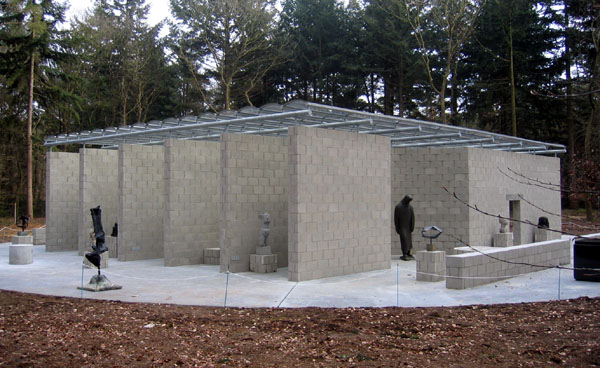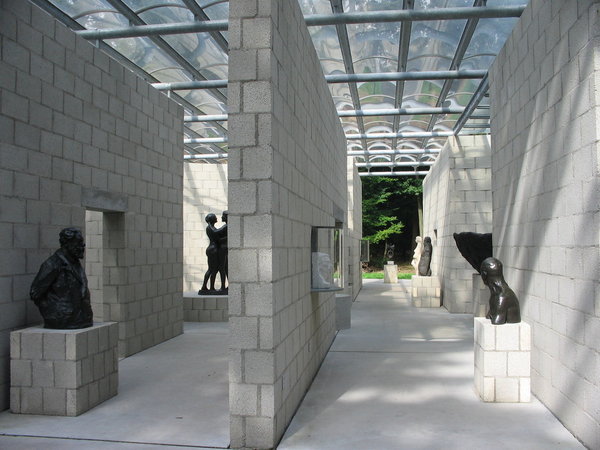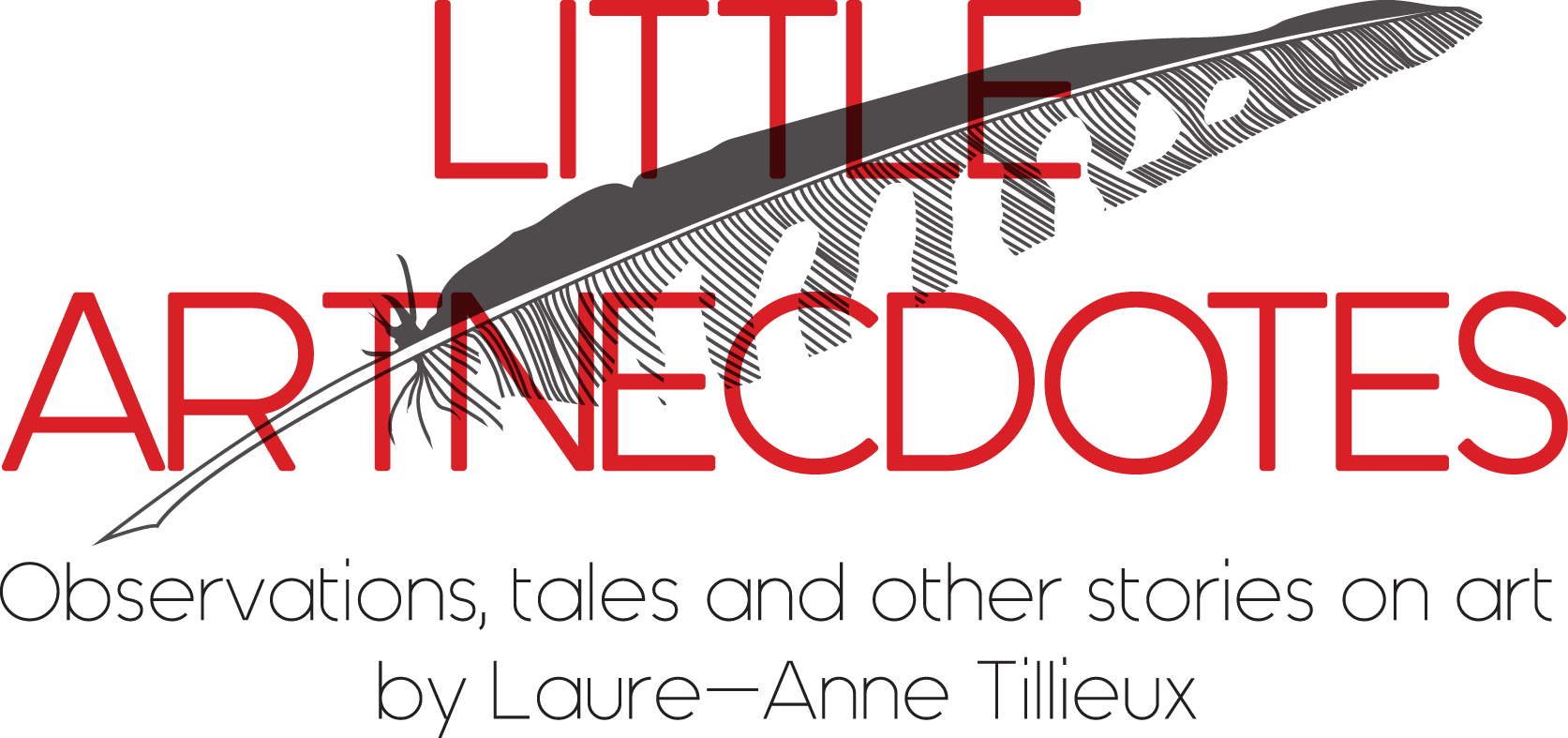
The Aldo van Eyck Pavilion
For those who have wandered through the wonderful park of the Kröller-Müller Museum could not have missed the mysterious pavilion full of sculptures of Dutch architect Aldo van Eyck (1918-1999) of 1965-1966. The architect designed this pavilion for the 1966 Sonsbeek exhibition, held in Arnhem. It hosted sculptures of nearly thirty artists including Jean Arp, Alberto Giacometti and Constantin Brancusi. Unfortunately soon after Sonsbeek the pavilion was destroyed. For all the architecture lovers amongst us, this extraordinary structure thankfully arose again in the mid-2000s in the museum park in the middle of the Veluwe.
The construction consists of six parallel walls of almost 4 meters high that are placed with a distance of 2,5 meters from each other. These walls bend a certain way making semicircular spaces arise. Sudden cuts transform the simple structure in a labyrinthal and complex spatial device. Surrounded by woods the pavilion is mysterious, abandoned and a bit frightening, due to its open structure especially. There are no doors or windows. Only a roof protects what is inside the structure.
The ‘Sonsbeek Pavilion’ took on a life of its own after its destruction. A handful of photos, a photo of a model, a plan drawing, and a set of sketches were the only reminders of this piece of architecture. Throughout the years this work acquired the status of ‘paper architecture’. It was known and discussed on account of the theoretical concept it illustrated and no longer seen and experienced as a real existing spatial structure. Liberated from this status, the pavilion has been restored in all its glory and proves to be a piece of art, a real one to be exact.

The Aldo van Eyck Pavilion (also known as the ‘Sonsbeek Pavilion’) at the Kröller-Müller Museum in Otterloo, the Netherlands. Courtesy Kröller-Müller Museum
